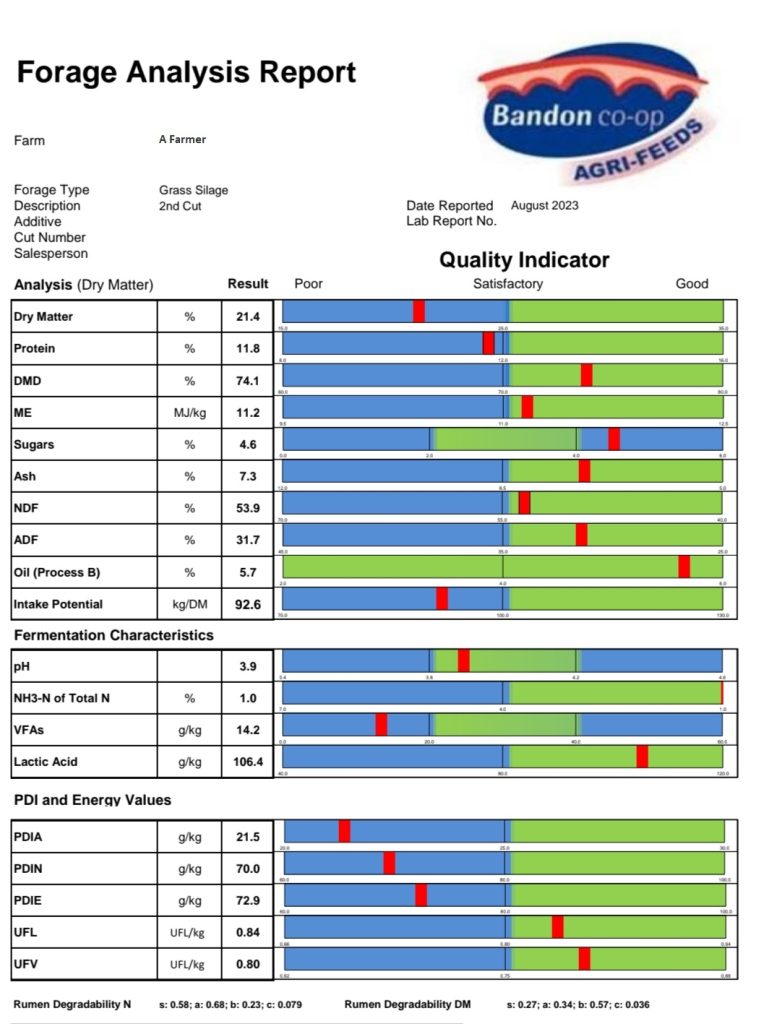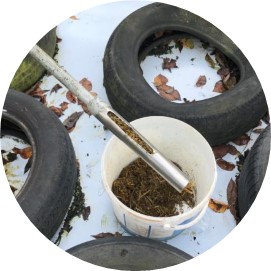forage analysis
Forage quality analysis is an essential tool in formulating diets and calculating feed stocks on farms. With silage being such a crucial component of dairy cow diets, having regular up-to-date analysis is vital. Where the quality of the forage is not known, it can lead to losses through reduced performance or over supplementation of concentrates. In addition to this, a key parameter such as the dry matter content is important in working out the actual amount of feed available to you.
As a member of the Forage Analysis Assurance (FAA) group and proficiency team we provide quick, reliable and comprehensive testing of forage and grass.
forages analysed
Grass Silage
Maize Silage
Wholecrop Silage
Testing grass, maize and whole-crop silages provides the knowledge required to optimise feeding of animals during the winter period. Assessment of silages and other forages provides a feeding value which can be used to identify the level of supplementation required. It will also give the farmer an indication of how well it fermented by measuring the lactic acid concentrated, ammonia and pH level. This will subsequently help ascertain the stability of the silage at feed out.
Testing forge also allows for the identification of any problems or deficiencies that have the potential to impact animal health.
Feed Nutrients Analysed Include:
- Dry Matter
- Dry Matter Digestibility (DMD)
- Crude Protein
- Metabolisable Energy (ME)
- Ash
- NDF
- ADF
- Starch
- Sugar
- pH
- Lactic Acid
- UFL
- UFV
- PDIA
- PDIE
- Potential Intake

Samples should not be taken until at least 5 to 6 weeks after ensiling and is essential to give the farmer an indication of feed quality so the animals overall diet can be formulated. The biggest error in forage analysis is improper sampling methods which will affect diet formulation and therefore animal performance. A representative sample of forage needs to be taken from every silage batch to reflect the variation in forage quality that occurs across your fields and during harvesting. To get an assessment of the overall silage pit, core samples are taken, at least 3 full depth samples from the top of the clamp.
Failure in sampling the full depth of the silage pit will not yield a representative sample, Fermentation profiles within the silage pit will vary, the bottom of the silage pit is the most compacted and at most risk of producing an acetic acid fermentation and have a lower dry matter, while the sides and top of the pit are most at risk of aerobic fermentation.
How to take a sample
- Take samples about 6 weeks after harvesting to take samples.
- Try to ensure minimum time to lab after taking the samples.
- Using a core sampler take samples from up to five well-spaced points on various areas of the surface on the silage pit.
- Discard the surface part of each core before mixing into a composite sample to get a weight around 500g.
- Be sure to reseal holes in bales after sampling to avoid damage.
- Put the sample into a zip tie plastic bag. Exclude air, seal well and post immediately.

To get an analysis of what the animals are actually eating now, take a sample from the face of the clamp. If there are areas of the face of the pit which are mouldy or damaged in any way, this material should not be included in the sample for sending to the laboratory. Take samples 6 to 9 inches into the face of the clamp in a W pattern so that each sample is taken from a different horizontal and vertical position, then thoroughly mix in preparation for analysis. If taking samples from round bales, take one sample every 5 to 10 bales using a corer. Mix the sample on a clean board and divide into 0.5 kg samples and place into a clean plastic bag. Samples can be stored in a fridge until posting to the laboratory. Try to avoid posting samples on a Friday as the sample will spend the weekend in transit and may deteriorate.
get in touch
To find out more on silage analysis or to arrange a test, please contact a member of the agri team
